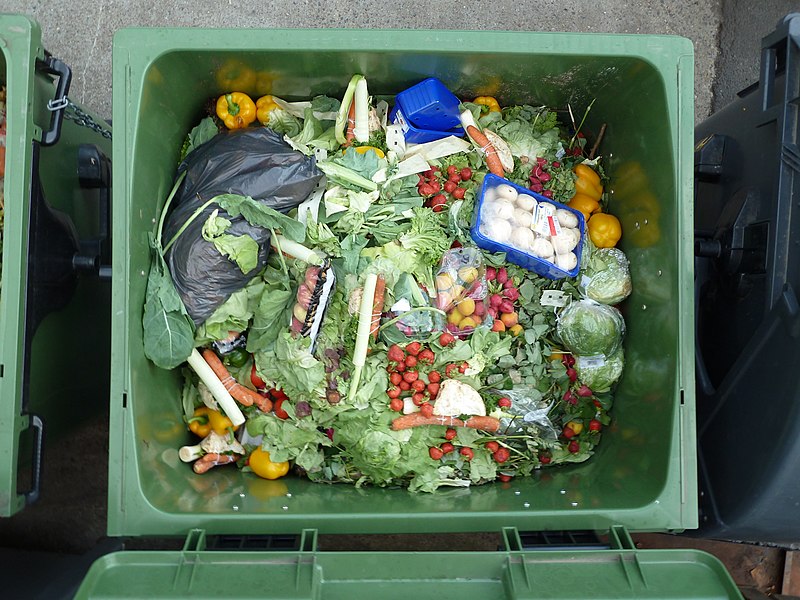Physical Address
23,24,25 & 26, 2nd Floor, Software Technology Park India, Opp: Garware Stadium,MIDC, Chikalthana, Aurangabad, Maharashtra – 431001 India
Physical Address
23,24,25 & 26, 2nd Floor, Software Technology Park India, Opp: Garware Stadium,MIDC, Chikalthana, Aurangabad, Maharashtra – 431001 India

‘Food Wastage’ is perhaps the last thing that comes to one’s mind in terms of various human-induced factors contributing to global warming and climate change. But studies have shown that food wastage is one of the most significant factors contributing to climate change at present in the world. In fact, emission from food wastage is double that of the emission from aviation which gets much more attention when talking about global greenhouse gas emissions.
Food Waste Emissions = 10% of global GHG emissions
It has been estimated that globally, food waste accounts for 8 to 10 percent of global greenhouse gas emissions. The Food and Agriculture Organization of the United Nations said that this amount of wasted food is enough food to feed more than a billion people.
Food waste is one of the main sources of methane gas emissions which again forms a significant component of greenhouse gas emissions. Most municipal landfills find food waste as the largest category of waste materials placed in them making them one of the largest sources of human-related methane emissions.
The anaerobic conditions required for the production and release of methane are established in under a year after food waste is dumped. The waste is decomposed by methane-producing bacteria to generate methane which has approximately 28 times the global warming potential of carbon dioxide making it a very potent greenhouse gas.
Also, it takes around 12 years for methane to be broken down into carbon dioxide and water vapor. We know that carbon dioxide will stay in the atmosphere for centuries which makes methane emissions from food waste quite dangerous.
40% of India’s Food ends up being thrown away
The average Indian apparently wastes 137 grams of food every day and that’s 50 kg per year. According to reports, 40% of the food is wasted in India and that is equivalent to 92,000 crores of rupees a year. The economic part of the wastage hardly seems to be the concern here. Lack of proper management of food waste is leading to pollution threatening human health and the environment.

India is regarded as one of the world’s largest methane emitters from landfills. In comparison to the global average of 18%, methane alone is approximately 29% of the total greenhouse gas emissions of India. According to a global study, the Ghazipur landfill in Delhi emits methane which is 6% of the total city emission of Delhi. Eliminating organic waste from landfills could be an important first step and in India, the Solid Waste Management Rules of 2016 mandate segregation of waste but much remains to be done in actuality.
In India, the burning of food crop residue gives another angle to the problem of food waste management. The burning of crop residues in Punjab, Haryana and Uttar Pradesh leads to the formation of smog-causing air pollution. This also has a far-reaching adverse impact on soil health and only leads to the further use of more and more fertilizers which again directly or indirectly leads to the emission of greenhouse gases. Moreover, black carbon, the soot particles in smoke and smog, contributes about twice as much to global warming.
GHGs emitted just to emit more GHGs
When food is wasted, we also waste all the energy that it takes to grow, harvest, transport, and package it. The wasted energy had come at the cost of greenhouse gas emissions. Food production leads to the emissions of carbon dioxide, methane and other greenhouse gases in multiple ways and the overall emissions consist of about 30% of the total global greenhouse gas emissions. At present, 31% of the total food grown, shipped or sold is wasted.
Solution
At present, a lot of food is being produced but a major section of the world population is going hungry even as a significant amount of food is not being eaten and getting wasted. The effort should be to feed more people while wasting less of what we already produce. There are various ways at different levels one can contribute to the global effort to waste less food so that greenhouse gas emissions from this segment get reduced.
Here are some of the ways, one can try to reduce food wastage at a personal level:
Planned Purchase: Often going to the market without a plan can lead to one buying more than what is needed. One can prevent unnecessary purchases by planning a grocery list beforehand.
Using the Refrigerator: A good refrigerator can keep food nutritious and edible for a significant period. Freezing food can help one to store food for a longer time than throwing it away just because it will go bad soon without refrigeration.
Being leftover creative: Before purchasing more food, one should try to eat the food that is already tucked away inside the refrigerator. Nowadays, there are various easily available mix-and-match recipes on the internet so that one can create an interesting plate of food out of the leftovers.
Ripe doesn’t mean wasted: Many fruits and vegetables look like they are wasted once they are ripe but although they don’t look pretty, there is nothing wrong with them. They will be equally nutritious and tasty in various recipes. Baking talent can come to good use in such times.
Don’t eat, don’t produce: One should try to avoid the production of food that is less likely to be eaten by them in the long run. Self-awareness is the key and self-regulation is the solution.